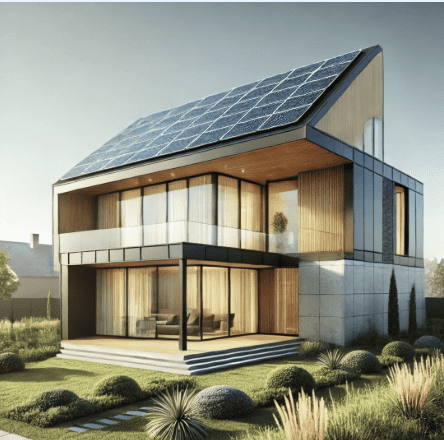
Green Rebuild Initiative
Facilitating 100% electric and Net Zero Energy rebuilding with full Solar Microgrid resilience.
Green Rebuild Initiative (GRI):
Facilitating 100% electric and Net Zero Energy rebuilding with full Solar Microgrid resilience
Overview
California residents are experiencing the growing impacts of climate change. In January 2025, fires tore through the Santa Monica Mountains, devastating communities in Pacific Palisades, Topanga, and Malibu. As residents begin the difficult process of rebuilding, they face crucial decisions around how to rebuild their homes to ensure sustainability and resilience. The Green Rebuild Initiative (GRI) aims to facilitate sustainable and resilience rebuilds by offering super green home designs that serve as templates, featuring 100% electric and Net Zero Energy (NZE) homes that are supported by Solar Microgrids that deliver unparalleled energy resilience. Additionally, the GRI is curating a corral of green architects, builders, and other collaborators that can implement those designs into new homes for property owners in Pacific Palisades, Altadena, and everywhere beyond.
Mission
The Green Rebuild Initiative (GRI) is committed to establishing a handful of super green 100% electric, NZE rebuild designs for homeowners who lost their properties in the 2025 LA Fires. These designs will support fire-affected residents and serve as a widely publicized blueprint for sustainable rebuilding in the Pacific Palisades, Altadena, and beyond. Additionally, the GRI is curating a corral of green architects, builders, and other collaborators that can implement those designs into new homes for property owners.
At the core of these super green designs is a commitment to 100% electric, NZE homes powered by Solar Microgrids, delivering an unparalleled trifecta of economic, environmental, and resilience benefits.
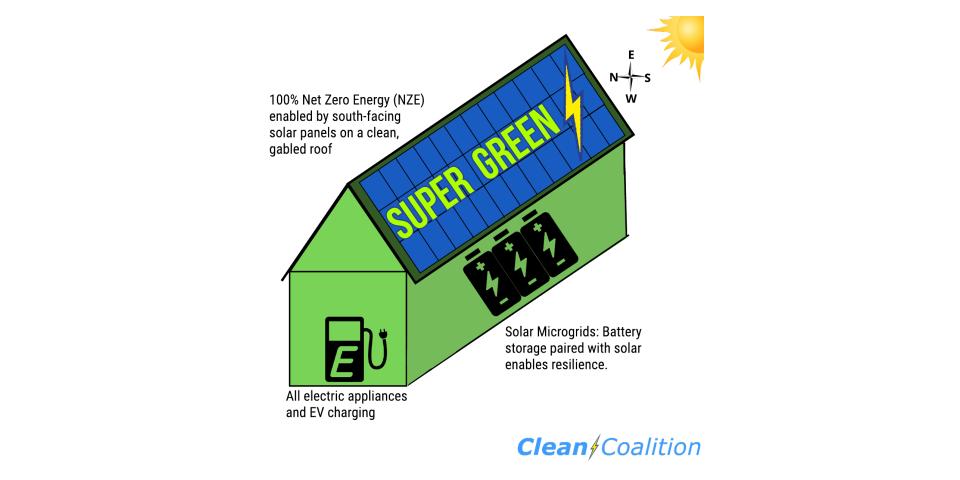
The GRI delivers a spectrum of benefits, including:
- Super green homes minimize energy costs while maximizing safety and resilience.
- All new homes can benefit from super green template designs, which are relatively easy to leverage compared to starting such designs from scratch, along with having easy access to the curated corral of collaborators to implement the designs into completed homes.
- The environment sees a major reduction in carbon emissions and a strengthened commitment to renewable energy and other smart energy solutions.
By making these designs accessible and replicable, the GRI ensures that rebuilding efforts contribute to a more sustainable and resilient future.
The 5-Step Plan
With a clear 5-step roadmap, the GRI aims to facilitate super green rebuilding:.
- Identify a handful of property owners who are committed to rebuilding in a super green fashion.
- Establish initial renderings and identify recommended all-electric appliances.
- Perform load analyses and size solar & storage for meeting Net Zero Energy (NZE) and delivering unparalleled energy resilience.
- Coordinate with a curated group of designers, architects, builders, and other collaborators who have proven experience to implement super green designs into new homes.
- Publicize the designs widely, via:
- Media (articles and TV news coverage).
- Collaborations with other parties like Rick Caruso, Mayor Bass and Steve Soboroff, Green Building Council, Direct Relief, and others.
- Webinars to provide detailed education about the GRI and the freely available designs and build awareness of the corral of super green collaborations.
To start, the Clean Coalition will work closely with a select group of homeowners who are committed to rebuilding in a super green fashion. By showcasing their projects, these early adopters will serve as powerful examples of what’s possible when sustainable design is integrated from the ground up.
Once these homeowners are identified, the team will create initial renderings that bring these visions to life. This includes selecting electric appliances that ensure no gas hookups are incorporated in the designs. Every element will be chosen to maximize efficiency and long-term energy cost savings.
A crucial technical step in the process is performing load analyses and determining solar and battery storage sizes to achieve NZE and to maximize energy resilience during short Public Safety Power Shutoff (PSPS) events, and more importantly, for long-term grid outages during actual disasters. In the end, Solar Microgrids will be designed to deliver an unparalleled trifecta of economic, environmental, and resilience benefits.
To bring these designs to life, the Clean Coalition is assembling experienced super green designers, architects, and builders. Although the GRI is just launching, the following collaborators have already been confirmed:
- Fallon Vaughan, a developer with hands-on experience building super green homes in Paradise, CA, after the devastating 2018 wildfires.
- Dennis Allen, Founder of Allen Construction and a leading advocate for sustainable homebuilding.
- Tim Hade, Co-Founder of Scale Microgrids, who will oversee the integration of solar-driven microgrid solutions.
- Lauren Michele, Owner & Sustainability Consultant, California Home Designs.
- John Bello, P.E., President at Bello Global Consulting.
- Ellen Bildsten, Architect and member of the American Institute of Architects.
- Elisa Garcia, Architect with Garcia Architects.
- Jonathan Port, Founder and President of Permacity Foundation.
Beyond the immediate rebuild, a critical goal of this campaign is scaling impact by making these super green designs widely accessible. Through strategic media outreach, key collaborations, and educational webinars, the Clean Coalition will ensure these homes serve as replicable blueprints for future super green new homes.
The campaign is actively engaging high-profile figures and organizations to maximize visibility and support. Notable target collaborators include:
- Mayor Karen Bass and Steve Soboroff, who are leading LA’s post-fire recovery and reconstruction efforts.
- Rick Caruso, a respected LA developer and leader of Steadfast LA, a nonprofit focused on accelerating rebuilding efforts in Palisades.
- The US Green Building Council, Direct Relief, and other key stakeholders who can help scale these efforts beyond the immediate region.
Through media connections and targeted partnerships, the Clean Coalition will amplify awareness of super green building as the future standard for sustainable development.
By transforming disaster recovery into an opportunity for innovation, the GRI is proving that rebuilding after climate disasters can be smarter, cleaner, and more resilient than ever before.
Solar & Solar Microgrids
- Solar – Harnesses sunlight to produce enough electricity to achieve Net Zero Energy (NZE).
- Solar Microgrids – Combines energy storage with the solar to deliver an unparalleled trifecta of economic, environmental, and resilience benefits. On an everyday basis, the energy storage time-shifts solar to optimize economics, and during grid outages, the energy storage ensures the solar stays online and that solar energy is delivered to the most important loads 24x7x365. All loads can be maintained for significant percentages of time during grid outages, depending on solar production on a given sequence of days. For lots of details, see the Clean Coalition’s value-of-resilience (VOR) methodology, which is called VOR123.
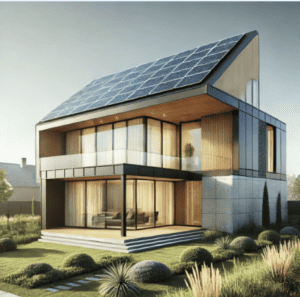
Electric Appliances
Heating & Cooling
- Heat Pump HVAC System – Provides both heating and cooling, with unparalleled efficiency.
- Smart Thermostat – Helps optimize heating/cooling energy use.
- Energy Recovery Ventilator (ERV) or Heat Recovery Ventilator (HRV) – Improves indoor air quality and efficiency.
- Ceiling Fans – Helps reduce HVAC energy use.
- Radiant Floor Heating – Optional for additional comfort.
Water Heating
- Heat Pump Water Heater – Provides hot water for domestic hot water (ie, indoor hot water), with unparalleled efficiency.
- Pool & Jacuzzi Heat Pump – Provides hot water for a pool and/or jacuzzi, with unparalleled efficiency.
Kitchen Appliances
- Induction Cooktop & Stove – More efficient and safer than traditional electric coil or gas stoves.
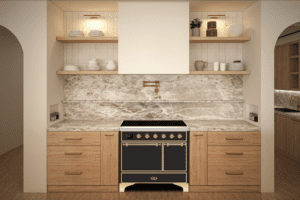 *Designed by Lauren Michele, California Home Designs
*Designed by Lauren Michele, California Home Designs
- Electric Oven – Convection or standard electric oven.
- Microwave – A quick and efficient cooking option.
- Electric Toaster Oven/Air Fryer – Helps reduce energy use compared to a full oven.
- Electric Coffee Maker/Kettle – For boiling water efficiently.
- Electric Refrigerator & Freezer – ENERGY STAR-rated for efficiency.
- Dishwasher – Preferably an energy-efficient model.
- Garbage Disposal – If needed, an electric-powered option.
Laundry & Cleaning
- Heat Pump Clothes Dryer – Uses less energy than a conventional electric dryer.
- Electric Washer – ENERGY STAR-rated front-loading models preferred.
Lighting & Power
- LED Lighting – High-efficiency lighting throughout the home.
- Smart Power Strips & Outlets – Helps prevent phantom energy loads.
Other Home Systems
- Electric Car Charger (EV Charger) – Level 2 charger for electric vehicles.
- Electric Lawn Equipment – Mower, trimmer, blower (battery or corded).
- Electric Fireplace – If there are any fireplaces.
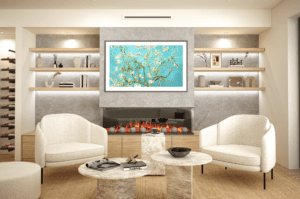 *Designed by Lauren Michele, California Home Designs
*Designed by Lauren Michele, California Home Designs
- Electric Water Pumps – If the home has a well or irrigation system.
Additional Considerations
Site Planning: Orientation for maximizing solar benefits for electricity production and passive solar heating in the winter and shading in the summer.
Building Envelope:
- High-performance insulation (walls, ceilings/roof, and floors).
- Triple-pane, low-E windows for energy efficiency.
- Airtight construction to minimize heat loss (Passive House being the gold standard).
Water Efficiency:
- Low-flow fixtures, dual-flush toilets, and rainwater harvesting systems.
- Greywater recycling for irrigation and non-potable uses.
Smart Home Integration:
- Energy monitoring systems for real-time energy use insights.
Conclusion
The Clean Coalition is committed to helping rebuild in a super green manner that delivers an unparalleled trifecta of economic, environmental, and resilience benefits. The Green Rebuild Initiative (GRI) bridges innovation and community action, transforming the tragedy of the 2025 LA fires into an opportunity for a sustainable and resilient future. By providing super green design templates and connecting residents with experienced architects, builders, and resources, the GRI ensures that these sustainable designs can be implemented in new homes everywhere. Together, we can lead the way toward a future built on renewable energy.

